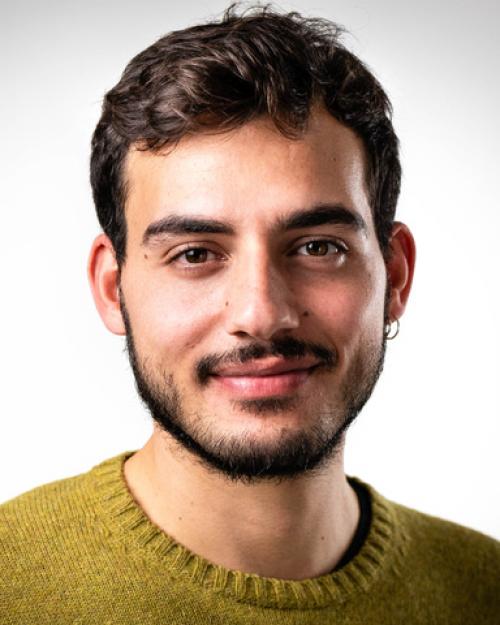Two pillar theories in physics – general relativity and quantum mechanics – stand up well on their own, but are incompatible with each other.
“These two theories describe two different regimes of phenomena,” said Francesco Sgarlata, a Klarman Postdoctoral Fellow in physics in the College of Arts and Sciences (A&S).
Quantum mechanics, he said, describes physical phenomena at atomic or sub-atomic scales; general relativity describes very large phenomena.
“The two theories are both correct in that they both predict very well, and we don’t have any violation of these theories. However, the two theories are inconsistent with each other,” Sgarlata said, adding that the inconsistencies show up in processes at extremely small scales.
A member of the first cohort of six Klarman Fellows, Sgarlata is using his three-year fellowship to join theoretical physicists at Cornell and around the world in trying to solve this inconsistency.
Physicists have long sought a “theory of everything,” or theory of quantum gravity, that would unify quantum mechanics and general relativity. In recent decades, researchers have tried a top-down approach, trying to come up with a unifying theory, such as string theory.
Sgarlata, in contrast, is taking a bottom-up approach to finding a theory of quantum gravity, which attempts to unify gravity with other fundamental forces of physics.
“We seek an approximation,” he said. “We don’t know what this theory of everything is. [Instead,] we are trying to write down some theory which can be seen as an approximation of quantum gravity, and we study what conditions this theory will have in order to be a good approximation of quantum gravity.”
Sgarlata is working with Cornell’s theoretical physics community, including his faculty host, Csaba Csaki, professor of physics (A&S), and Thomas Hartman, associate professor of physics (A&S), to “identify some hidden properties of quantum gravity,” one at a time – and then build from there.
“Francesco’s research is on the fundamental properties of particles and forces,” Hartman said. “His goal is to understand what particles are consistent with basic principles of relativity and quantum mechanics, and how these particles can interact.”
Sgarlata’s background is in particle physics, Hartman said, while his own background is in black hole physics and string theory.
“There is a lot of overlap, but these are two different perspectives,” Hartman said, “so this is a great opportunity for us to collaborate on new ideas. We are working on joining forces and combining our approaches.”
To find conditions necessary to support a theory of quantum gravity, Sgarlata and collaborators focus on “first principles” – those we experience in everyday life but are difficult to prove mathematically. One example is causality – the link between cause and effect.
“If I punch you, you will start feeling pain after I punch you, not before,” Sgarlata said. “We assume that this theory of everything respects causality.”
Other first principles the researchers consider are unitarity (probabilities must add up to 1); and locality (particles only interact with neighboring particles.)
From a “swampland” of possible theories arise islands of probable theories, Sgarlata said, narrowing the scope. “We get some constraints on the parameters of the theory,” he said.
Hartman said that Sgarlata uses methods from particle physics to develop and interpret theories of physics at high energies.
“In some cases, his methods can even be used to understand some corners of the more mysterious theory of quantum gravity at ultrashort distances,” Hartman said. “Over the next couple years, I think Francesco’s research at Cornell will lead to better insight into fundamental particles and new connections between particles, gravity and black holes.”
Hartman, who researches quantum gravity, and Sgarlata find common ground in black holes.
“Black holes are the perfect setup to test quantum gravity properties,” Sgarlata said. “We don’t know what’s happening in the interior of a black hole, and in particular at its center, where a singularity is located. The singularity is a point in space-time where Einstein’s theory of general relativity breaks down – that is, it stops being able to predict physical phenomena. We believe quantum gravity can solve this unpredictability issue.”
Sgarlata said that the theoretical physics community at Cornell is based on collaboration and the sharing of ideas. The Klarman Fellowship, Sgarlata said, offers independence to pursue research collaborations toward solving the biggest problems in physics.
“We have the tools to understand features of quantum gravity,” he said. “Today we are reinterpreting these concepts in a more modern way, and we are discovering new concepts of physics just by our interpretations.”






